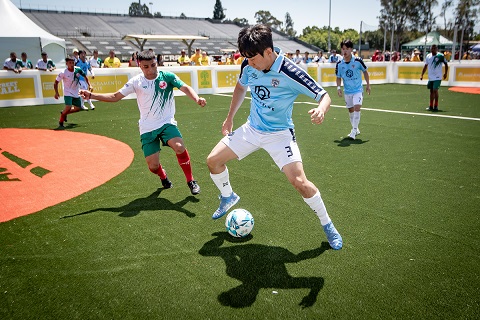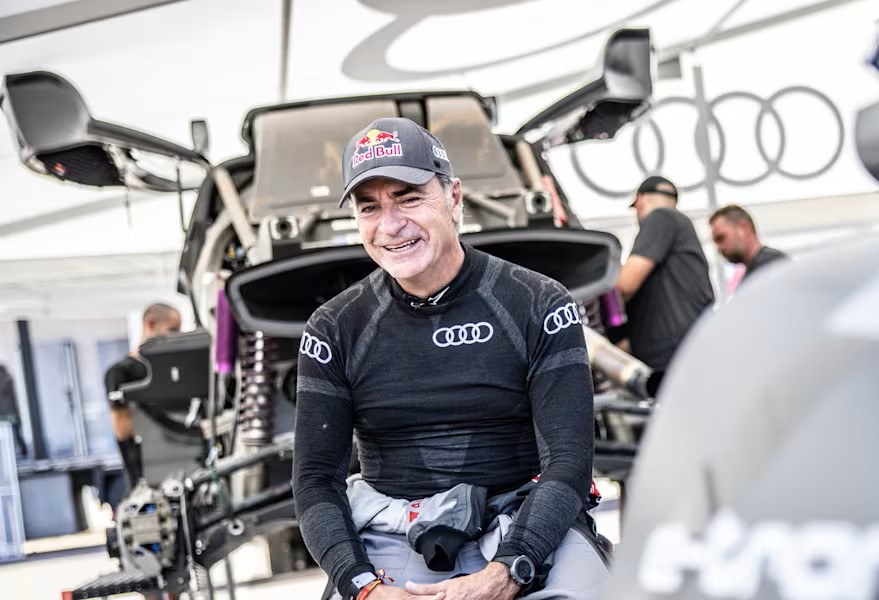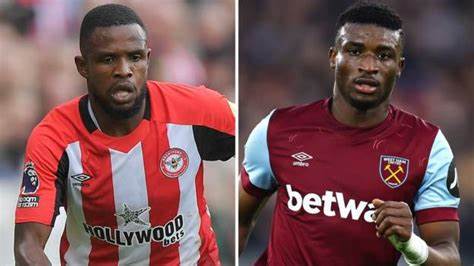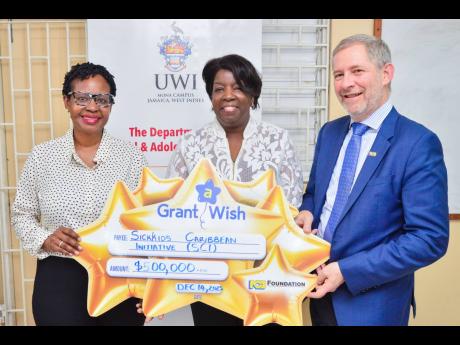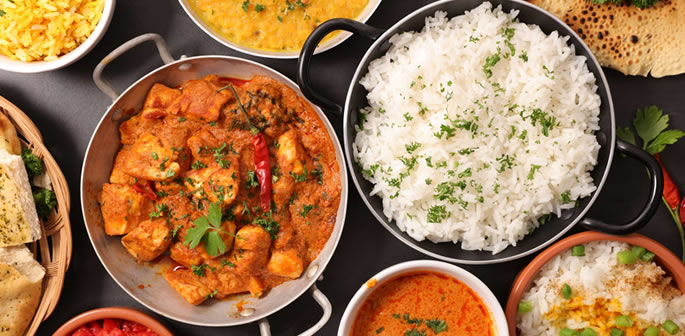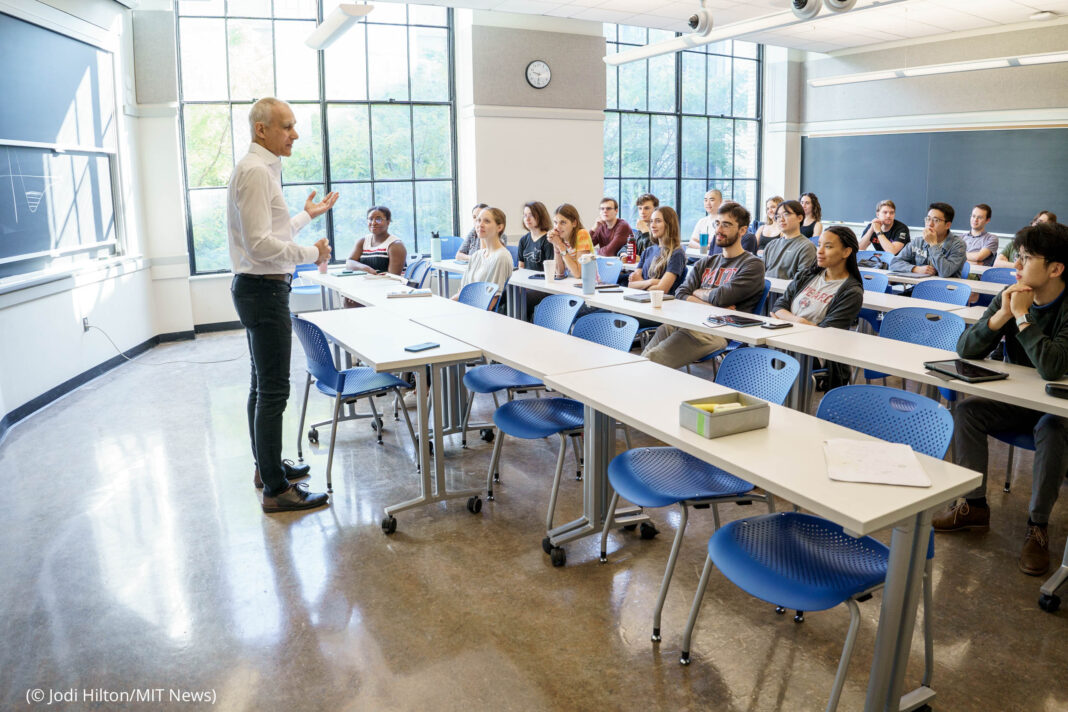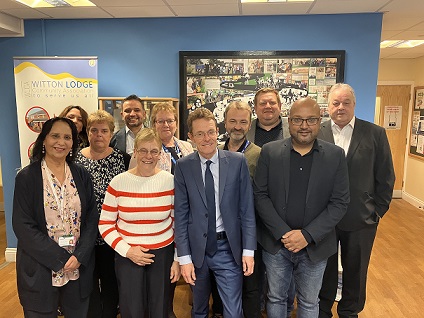As a double World Rally Champion and a three-time winner of the Dakar Rally, Carlos Sainz has a rightful claim to be one of the greatest drivers in motorsport history.
While he may be better known to a younger generation of motorsports fan as the father of Ferrari’s Formula 1 star Carlos Sainz Jr., his record speaks for itself and clearly marks him out as a true rally legend whose achievements span decades and have transfixed audiences across the globe.
As ‘El Matador’ prepares to take on the Dakar Rally with Audi once more next January – the world’s most famous endurance race is being staged for the fifth successive time in the Kingdom of Saudi Arabia – after finding time to catch-up with the 61-year-old to talk about how he first got involved in motorsport, his experience of competing on the Dakar, the value of Saudi Arabia as a host venue and how he felt when his son won the 2023 F1 Singapore Grand Prix…
Q. You were talented in sports when you were young, both as a national squash champion and a footballer who caught the attention of Real Madrid, so why did you choose to pursue a motorsport career? Where did the interest start?
Carlos Sainz Sr. (CS): “Since I was young, I was always passionate about cars, and I had a small go-kart that I would play with. What really triggered my interest though, was when I was 11 years old, my sister met her future husband, and he was a very good rally driver. I started to follow the rallies that he participated in and then soon after, my brother, who is four years older than me, also started to compete in rallying.
“But you are correct, sports were a strong aspect of my school, and I played tennis and squash, becoming Spanish champion. I also played a lot of football, especially between the ages of 14 and 18. I used to play as a number five or in mid-field. But as soon as I got my driving license, I began competing in rallies as that was where my passion lay.”
Q. What advice would you give to young drivers that look up to you and want to get behind the wheel? Should they consider following your footsteps and look at other sports beforehand?
CS: “I would say that having a sporting background did help my physical condition when I was behind the wheel — and it still does. Squash is a really great sport. If I had to recommend to someone a sport to help them to become fit for competing in motorsport, I’d say squash is the best option. To play it you need to be very fit from a cardiovascular point of view. You need good hand/eye co-ordination, good reflexes, peripheral 360-degree vision and good reactions. Squash helped me to achieve a strong physical condition for when I started driving.
“But the other aspect that I had, was a mission to win. The fact that my brother was four years older than me, meant I played a lot of sports with him, and he always beat me. But that gave me a lot of motivation to keep practicing and keep improving so that one day I could beat him! All of that probably put me in a good place to be competitive when I started participating in motorsport.”
Q. After your successful career, in which you won the World Rally Championship with Toyota in 1990 (and were runner-up four times) did you find competing on the Dakar Rally continued to satisfy the interest you had for the sport?
CS: “One thing has been clear to me since I was very young and that continued with the way I approached my world championship career — my passion for motorsport was extremely high. My dreams about achieving different goals in my life, along with my self-confidence, was also high.
“When I decided to stop driving in the World Rally Championship, in that final year I was still victorious in Argentina, and we won the manufacturers’ title with Citroën. Then I wanted to become the first Spaniard to win the Dakar in cars and luckily, a few years later, I managed it.
“I think life is about dreams, targets, and passion. I woke up this morning and was disappointed from my previous rally that I did in Morocco. But I went to the gym, put it behind me and started my physical training for the Dakar. I’m still motivated because my passion is strong, and I want to continue to be successful. I still want to do a good job, despite now, being what you might call a ‘veteran’ driver.”
Q. You won your first two Dakar Rallies in 2010 and 2018 in South America, before winning a third title in 2020 in Saudi Arabia. How different is the Dakar to the World Rally Championship?
CS: “The Dakar is unique — it’s very different to any other event. Firstly, the duration takes two weeks and that makes it really tough. The challenge of driving for four to five hours a day — blind, because you have never been through the road before — at the speed we are going, makes the challenge really high. Just to give you an idea, your heart rate is 140-165bpm for up to four hours at a time. So physically, it’s very demanding. That’s why I prefer to suffer at my home in the gym on a daily basis, so that I suffer a little bit less when I’m on the event!
“All of these combinations, the endurance factor, the challenge of driving and with a lack of sleep in a difficult environment means that if you are not well prepared, then after a few days your performance will suffer. When you consider who can realistically win the Dakar, it’s probably only three or four drivers that are able to achieve the outright victory. Other drivers will win individual stages, but it’s another thing to be able to fight across two weeks. That’s what makes the Dakar a special competition.”
Q. How different are the conditions and the terrain in the Kingdom of Saudi Arabia compared to South America? And what do you like about the variety of territory and landscape in the Dakar today?
CS: “After Africa and South America, we’ve now had Dakar in Saudi for the past four years. It’s a great country to host the rally, as it’s a perfect environment in which to host such a challenging event. And we were very lucky that Saudi Arabia came to host Dakar after the South American events came to an end.
“What’s great about the place is that you have the desert, a good combination of terrain — gravel, rocks, sand dunes — while retaining the same characteristics of the rally from its past, when it was held in north Africa. The marriage between Dakar and Saudi couldn’t be better for the participants. On top of that, Saudi Arabia does a great job in welcoming so many motorsport activities, whether that is Formula E, Formula 1, or Extreme E too.”
Q. Having taken part in each edition of the Dakar Rally in Saudi over the past four years — and now returning for the fifth time – what has surprised you most about the Kingdom?
CS: “First of all I would say there is a big change today from when I first visited the country — it’s much more open and progressive. The people in Saudi Arabia are very welcoming and it’s clear they are working hard at becoming more international. There are certain things you need to respect with any country, with regards to local customs and traditions and Saudi in no different in that respect. Plus I always feel very welcome there.”
Q. There are more successful female drivers taking part in Dakar today, such as Saudi driver Dania Akeel and Spanish drivers Cristina Gutiérrez and Laia Sanz. The latter competes in your ACCIONA I SAINZ XE team in Extreme E. How do you think the landscape is changing for women competing in motorsport and what more needs to be done from your perspective?
CS: “Depending on the category, motorsport has traditionally not been easy for female participation, but Extreme E has been a fantastic example of how women can perform at a very high standard. Extreme E offers a great opportunity for women to compete at the same level as men. There has not been another discipline that offers that same example in the world of motorsport. I believe that Extreme E is an excellent category in enabling females to take that next step into other avenues of which Dakar is a good example of that progression. It’s not an easy transition, because of the physicality of the rally, but female drivers have proved they can do it.”
Q. You became the oldest winner of the Dakar Rally in 2020 at the inaugural event in Saudi Arabia. How do you continue to stay fit and competitive at this stage of your career?
CS: “You need to be in top physical condition to be able to perform for five hours, full attack, for up to two weeks. You have to know yourself well, when you perform at a certain level at a given age. You need to be aerobically strong because of the high pulse rate achieved when driving in extreme conditions at speed over a long time.
“As important as the cardio part is the muscle strength. You need to be strong in your neck and back. And generally, in your body because of the many bumps and jumps you hit on the route for long periods and for many days. When you are a veteran driver like me, you know your body well, but at the same time, you need to do more preparation than you did when you were younger — so it is not easy.”
Q. What are your thoughts going into the Dakar with Audi again in 2024, do you think you’ll be more competitive this year?
CS: “We think we have been working in the right direction with the suspension, which was one of the key points to improve. But another factor is the extra 15kW we will get, because when you analyse the data, with our weight we are accelerating less than the competition because we are 100kg heavier, so the extra power will compensate for this.
“This is very welcome, as over the past two years it’s something I’ve been pushing for. As you know the two key things in motorsport are weight and power and if you have the same power and 100kg more you are not going to be as competitive as the opposition. For next year with a bit more power — if we get our reliability under control — then we have a strong team to compete with and hopefully we’ll score a decent result.”
Q. Finally, how proud are you watching your son Carlos at Ferrari and how tense were you watching the final laps of the Singapore Grand Prix — when he came through to win?
CS: “I wasn’t at the race in Singapore, as I was watching in Sardinia as we were there with Extreme E. First of all, I was very happy for him and very proud. All weekend he looked good, as he was quick through practice and qualifying and then the way he managed the race was great too. It was unbelievable in those last five laps, knowing that his only chance to win was to give Lando Norris behind him the DRS [Drag Reduction System].
“Not only was he smart to think of it, but he was brave enough to try the trick, because if he got it wrong then he would have looked silly. So, the way he looked in his mirrors and calculated each lap how to execute it in the perfect way to maintain the gap resulted in a very special win and I was obviously very happy.”
“When you consider his circuit experience, for many years people thought rally drivers were wild, driving sideways, but the precision you need on either Tarmac or in rallying is at such a high level. You need good control, and you cannot compare F1 with rallying. The latter is really difficult. I always have big respect for rally drivers, as I do for Formula 1 drivers…”



